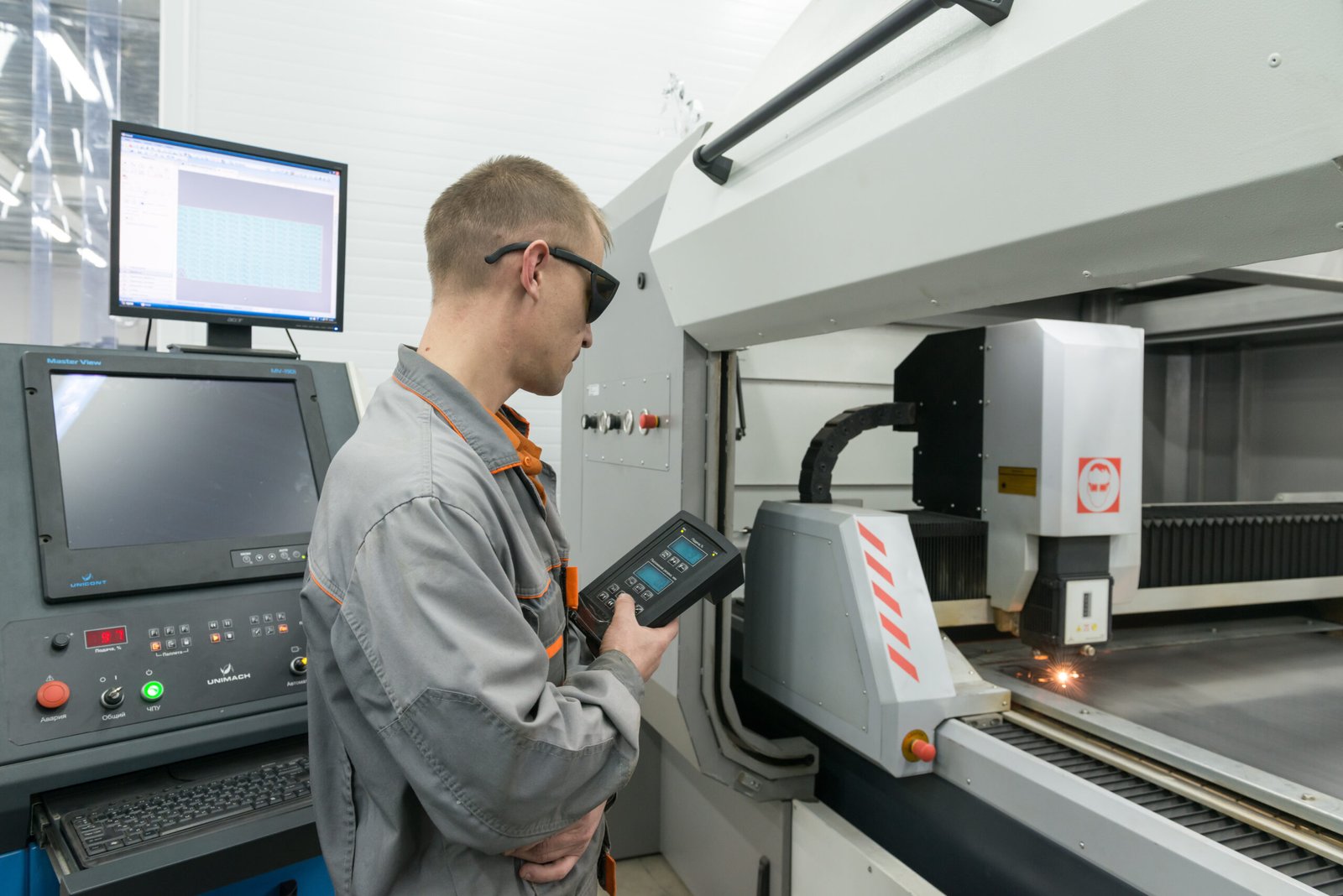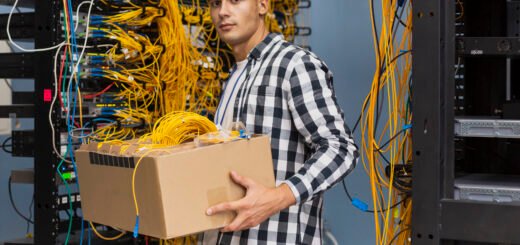What Is CNC Play? A Comprehensive Guide to Its Role in Digital

Manufacturing, art, and design have all been utterly transformed by computer numerical control (CNC) technology. The phrase “CNC Play” has evolved as a concept and a practice within this vast sector, however, and it presents chances for efficiency, creativity, and invention. Educators, hobbyists, and manufacturers all need to know what is, but what is it anyway?
Whether you’re working on a home project or an industrial one, you’ll find the basics of in this article. Learning unlocks a world of possibilities, whether you’re an experienced manufacturer or a do-it-yourself enthusiast.
What Is CNC Play, and Why Does It Matter?
CNC Play is fundamentally the method of experimentation and optimization made possible by technology. It uses CNC machines not only for rigorous manufacturing chores but also for investigating innovative ideas, testing new designs, and stretching the capabilities of digital fabrication. CNC Play turns conventional, inflexible manufacturing techniques into an inventive playground.
It matters because it allows users—from industry experts to hobbyists—to innovate freely, discover optimal methods, and create personalized, high-quality products while leveraging the precision of CNC machines.
How Did CNC Play Evolve Over Time?
The first CNC milling machines were made in the 1940s. Industrial CNC machines have gotten cheaper, more versatile, and easier to use. As these machines became more accessible, was born.
Key developmental milestones include:
- Access to Hobbyists: Smaller, more reasonably priced CNC devices such as desktop routers or laser cutters made CNC accessible to small companies and home-based artists.
- Ease of Use: Modern programs, such as GRBL or Fusion 360, streamline coding and enable simpler “playing” with many designs.
- Growing Maker Communities: Maker Faire and Fab Labs among other sites encourage CNC machine exploration and invention.
From rigorous industrial chores, CNC Play has transformed technology into a potent instrument for experimentation and teaching.
What Are the Core Components of CNC Play?
To understand , we need to break down its essential components:
- CNC Machine
The heart of CNC Play is this hardware. These devices range in kind from routers, laser cutters, and plasma cutters, all meant for certain uses.
- Software
CNC Play creates and runs plans using CAD/CAM tools. Fusion 360, Easel, and AutoCAD work well here.
- G-Code
G-Code offers the instructions guiding machine operations including cutting paths, speeds, and depths in CNC machines.
- Material
To investigate new uses, sometimes entails experimenting with several materials—wood, metals, plastics, or composites..
- Creativity and Experimentation
Perhaps the most critical element, thrives on a spirit of exploration, where mistakes and successes lead to innovation.
By integrating these components, enables users to manipulate machines flexibly and create more dynamic results.
How Does CNC Play Empower Manufacturers?
For manufacturers, is more than experimentation—it becomes a way to optimize operations and gain a competitive edge. Case studies illustrate the power of:
- Automotive Industry: A manufacturer used to prototype vehicle components swiftly, reducing production costs and improving precision.
- Aerospace: Allowed simplified production of complex aircraft components by testing and refining their designs.
- Furniture Design: Some companies have adopted to create customizable, high-end furniture styles with intricate detailing.
Through iterative experimentation, manufacturers enhance efficiency, reduce waste, and bring innovative designs to market faster.
What Role Does CNC Play Have in Hobbies and Personal Projects?
For hobbyists and makers is an enabler of creativity. With smaller CNC machines now widely available, enthusiasts can design and create unique projects at home.
Examples of hobbyist-friendly CNC machines include:
- Desktop CNC routers for intricate woodworking projects.
- Laser cutters for making custom jewelry or gifts.
- Mini CNC lathes for metalworking experiments.
Many makers use for projects like:
- Personalized coasters, keychains, or signs.
- RC vehicle parts or DIY drones.
- Intricate art carvings or engravings.
This accessibility empowers creators to turn ideas into tangible objects, experimenting with minimal resources.
Why Is CNC Play Vital in Education?
CNC Play is popular in STEM classes. Children learn engineering, manufacturing, and design via hands-on experiences..
Benefits of CNC Play in Education:
- Teaching Design Thinking
Students learn to ideate, prototype, and iterate using CNC equipment.
- Hands-on Learning
Making physical objects reinforces classroom concepts, helping students grasp abstract ideas.
- Skill Development
CNC Play fosters skills in CAD/CAM software, machine operations, and project management.
Educators report that sparks students’ interest in technology while preparing them for careers in design and manufacturing.
What Are the Future Trends and Innovations in CNC Play?
The future of CNC Play is bright, with evolving technologies driving the next wave of innovation. Emerging trends include:
- AI Integration
Artificial Intelligence is being used to optimize designs and detect errors during CNC operations.
- Advanced Materials
CNC Play will involve cutting-edge materials like carbon composites and graphene.
- Hybrid Machines
Combining CNC machining with 3D printing expands capabilities, enabling projects that direct machining alone could not achieve.
These advancements position CNC Play as a dynamic tool for next-generation design and fabrication.
How Do You Choose the Right CNC Play Software?
The choice of CNC Play software depends on your needs, skills, and budget. Here are some tips:
- Assess Your Skill Level
Beginners may prefer simpler tools like Easel, while professionals might lean toward Fusion 360.
- Consider Compatibility
Ensure the software integrates seamlessly with your CNC machine.
- Budget
Many affordable or free options exist, though advanced software often comes with a price.
- Look for Features
Features like 3D simulation, cloud storage, or automatic error detection can be invaluable.
Evaluate user reviews and free trials to explore software capabilities before committing.
What Are the Challenges and Limitations of CNC Play?
While versatile and innovative does come with its challenges:
- Learning Curve
Mastering CNC machines and software can take time, particularly for beginners.
- Cost
High-end CNC machines and software can be expensive for small-scale users.
- Maintenance
Regular calibration and repairs are required to maintain accuracy and functionality.
Despite these limitations, CNC Play’s potential far outweighs the obstacles, making it a worthwhile investment for innovators.
What Is the Impact of Modern Industries?
CNC Play is more than just a trend—it’s a revolution in how we think about design and manufacturing. From manufacturing plants to home workshops, has transformed accessibility and creativity.
By enabling precision, customization, and cost-efficiency serves as a bridge between traditional manufacturing methods and future innovations.
Are you ready to explore Begin experimenting, designing, and pushing the boundaries of what your CNC machine can achieve. The playground is open—where will your imagination take you?


